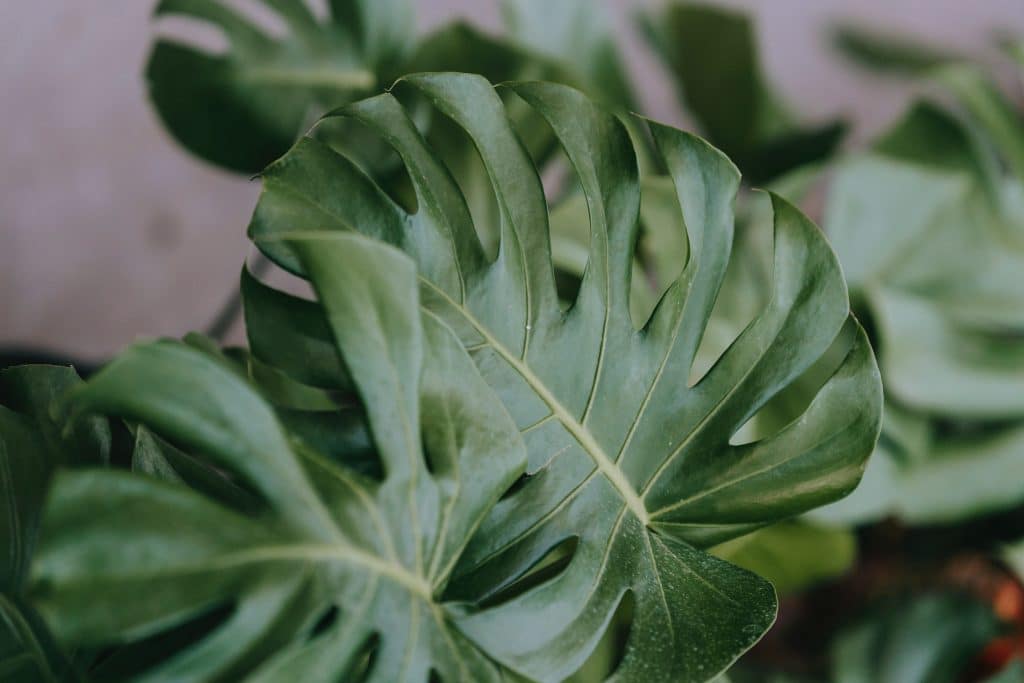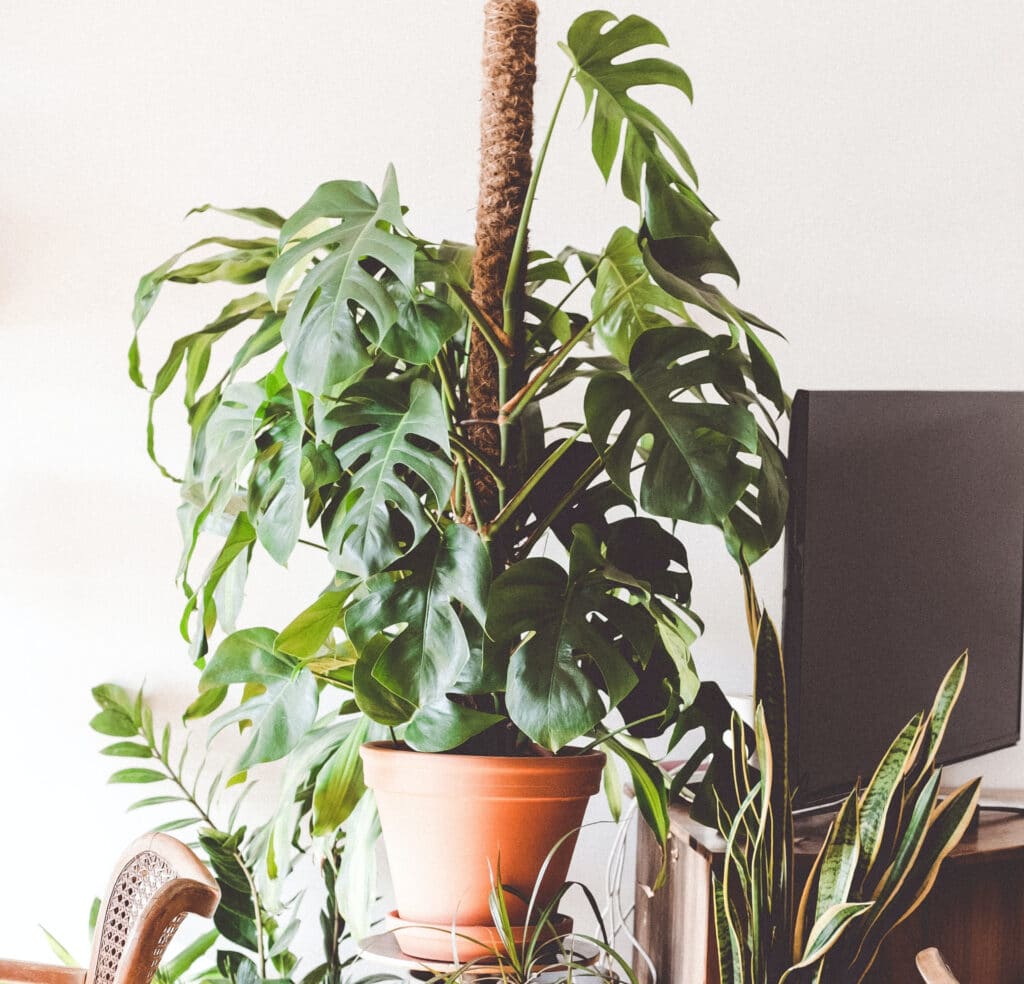Where to Get a Monstera Adansonii & Swiss Cheese Plant Care
Just because you can’t pronounce it doesn’t mean you’re doomed to kill it.
The Monstera adansonii, a breathtaking leafy plant with delicate holes adorning its leaves, is passed over by many budding botany enthusiasts because it looks hard to maintain.
Like it requires you to quit your job so you can stay home and tend to it full-time.
Yet, the Swiss Cheese Plant – an apt nickname for this spectacular plant – has a secret:
It’s not very high maintenance at all.
Perhaps you’ve been pining for one, charmed by its lush abundance and patterned leaves, but haven’t been brave enough to own one yet.
If so, don’t worry.
Ahead, we cover everything you need to know. We share where and when to purchase your Monstera adansonii and what it needs to stay happy and healthy once you’ve brought it home.
What is the Monstera Adansonii?
The Monstera adansonii is a Philodendron and a member of the Araceae family. You can distinguish it by its large heart-shaped leaves containing almond-shaped holes. Some refer to it as a Five Holes Plant, among the other names.
Native to the thick jungles of Central and South America, it grows in indirect sunlight amongst a slew of other tropical plants, all of whom compete for sunshine.
Some believe that its fenestrations, a fancy term for the holes in its leaves, help light filter onto new growth through the jungle canopy and its larger leaves.
The older, larger leaves contain more holes, and the new-growth leaves start without any.
It not only grows on the ground but also acts as a vine – growing up the understory of trees on its quest for sunlight.
There are other Monstera varieties, such as the Monstera deliciosa and the Monstera obliqua. The main distinguishing characteristics of those varieties are whether they have holes and, if so, the shape of the holes.
Other varieties have split leaves, which is another example of fenestration.
Keep in mind a Monstera plant is toxic if consumed. If you have any pets (or young children!) who have an affinity for snacking on leaves, you may want to keep yours somewhere out of their reach, such as in a hanging basket (it does well as a hanging plant) or on a high shelf.
Similar: Why You Should Try Apartment Gardening
What is Required For it to Thrive?
What is the best strategy to ensure your houseplant stays happy and healthy? As with any plant, the secret to success lies in mimicking its natural environment as best you can.
So, before you rush to bring your new plant home, take a moment to read through this proper plant care.
We’ll give you a better idea of where to place it, and depending on where you live, whether or not you need something additional, such as a humidifier or grow light.
Light
Keep it out of direct sunlight. Low light or indirect light works best. Ideally, place it near an east- or west-facing window.
If your window faces neither of those directions, don’t be dismayed. It should be fine near the window you have.
The plant is tolerant of low-light conditions but may not grow as much. Be sure to stay on top of the watering schedule and supply it with appropriate nutrients if it appears to be struggling.
You can also add a grow light to support low-light conditions.
Soil
Your Monstera grows best in well-draining potting soil.
You can mix regular potting mix with peat moss or pumice. Mix at a ratio of half and half. Perlite is a great addition as well.
The soil used for orchids is also an option.
Maintaining healthy pH levels is also necessary to keep your Monstera healthy. The pH you want to strive for is between 5.5 to 7.0, which will help ensure a healthy growth rate.
You can also give it a boost with a general well-balanced liquid or slow-release houseplant fertilizer about once a month, from spring to summer. Fertilizer helps your plant receive sufficient levels of chlorophyll.
Among other things, yellow leaves are a good indicator that your plant needs fertilizer or lacks other vital nutrients.
However, refrain from using fertilizer if you recently repotted it, as the roots are still working to establish themselves, and the fertilizer can potentially burn weak roots.
Additionally, make sure whichever pot you select for your Swiss Cheese plant has proper drainage and is larger than the root ball. It likes to stretch its roots and is quite the grower.
Humidity
Jungle environments are humid, and your Monstera loves 50 to 90 percent humidity. Depending on where you live, maintaining these levels can be problematic.
If you live in a low-humidity area, there are a few workarounds.
Bathrooms tend to have higher humidity levels than other rooms in the house, so one option would be to place your plant there if the lighting is sufficient.
Alternatively, you can spritz the leaves with mist from a spray bottle.
Filling a saucer below the pot with pebbles and water increases humidity slightly.
If you live in an arid region, it’s wise to invest in a humidifier. You can purchase one relatively cheaply through Amazon or other retailers.
As far as temperature, your plant appreciates similar temperatures you do and is happiest in a space between 60- and 80-degrees Fahrenheit.
Watering Schedule
Finding the perfect watering schedule may be a little tricky at first. They prefer moist soil, yet both underwatering and overwatering can be problematic.
You may need to work a little to discover the “sweet spot” and then modify it depending on the changing of season and temperatures.
Before watering, make sure the top inch of soil is completely dry.
Ensure that the water is not accumulating in the saucer underneath the planter. This leads to saturated roots, soil, and an unhappy plant.
Discover: Plants to Decorate Kitchen Cabinet Tops
Where and When Should You Purchase?
Okay, now that you know the fundamentals required to keep your plant happy, let’s touch on where and when to get one.
Monstera Adansonii For Sale
Monsteras are typically available at any garden center.
Alternatively, you can purchase your online and have it delivered. A disadvantage is that it may be damaged or “shocked” during transportation.
Plus, there’s something special about personally selecting the specific plant you want and bringing it home. When buying online, you don’t get this experience.
Monstera Adansonii Price
The price of your Monstera will vary depending on the size of the plant and where you buy it. You can expect to spend anywhere from $16 to $60.
Monstera Adansonii Growing Season
The Monstera adansonii is an evergreen, which means it doesn’t drop its leaves seasonally. However, the growth slows from late fall to winter.
If you purchase yours during its dormancy period, it may struggle more than if you bought it from spring to early fall. Remaining attentive to i, and showing it a little extra care if it appears to be having a hard time should keep it happy enough until spring.
Then, it should grow, strengthen, and establish itself when dormancy ends.
Why are My Monstera Adansonii’s Leaves Turning Yellow?
There are a few common issues you may experience with your plant, yellow leaves being one of them. We’ll go over each one here and include the best way to solve the problem.
Yellow Leaves
Yellow leaves are your plant’s way of telling you something is off. Usually, the issue is the watering: it’s receiving too little, or you’re overwatering.
If you’ve adjusted how often and how much you water and it’s still unhappy, it could be that it is lacking or being over-fertilized.
Yellow leaves can also indicate root rot, a common issue resulting from improper drainage.
Another potential cause could be stress from moving or reacting to an extreme temperature fluctuation.
Spider Mites
If you notice a very fine web weaving through your Monstera and yellow splotches on the leaves, your plant likely has spider mites.
These pesky creatures are barely visible to the naked eye. They ravage your plant by draining it of its sap, which is what creates the yellow polka dots on the leaves.
Spider mites are best treated manually by rinsing them off in the shower or with a hose. Pay extra attention to the plant base where the mites like to hide.
Spider mites don’t like a high humidity environment, so upping the humidity levels and regular rinses will help.
Mealybugs
Mealybugs also suck the sap from your Monstera. They look like tiny pieces of fluff or fuzz. You can remove them by adding some diluted alcohol to a Q-Tip or a cloth and wiping your plant’s leaves.
The sooner you notice a bug attack, the easier it is to eradicate.
Learn more: How to Build a Victory Patio Garden
When Your Monstera Adansonii Plant is Thriving
You can tell when your Swiss Cheese Plant is happy because it will attempt to take over your home, transforming it into a jungle. While this may sound appealing, it isn’t very practical.
By getting creative, you can do a few things to allow it some growth while encouraging its natural expression.
Moss Pole Trellis
Create visual interest and allow your indoor plant to do what it does in the jungle by sticking a moss pole in the soil. This acts as a trellis. As a vining plant, your Monstera will be happy to start to climb.
As it grows, you’ll notice its aerial roots. The aerial roots emerge from the stem and secure the plant to the moss pole as it climbs.
Pruning
Pruning keeps your Monstera healthy by removing old dead leaves. It helps control growth as well. When pruning, there are a few things to consider, as going overboard can do more harm than good.
It’s best to prune during the peak growing season, which is spring to early summer. Focus on one area at a time; removing too much foliage robs your plant of the capacity to photosynthesize.
When pruning new growth, you can save and propagate the clippings.
Propagating
Propagation using water is the easiest, most common way. Make sure your trimming has at least two nodes (the part where the new growth emerges from the stem) and add it to a jar or glass of water.
Let it sit in indirect sunlight, dumping out the old water and adding fresh water every couple of days.
You’ll notice roots starting to form, and when they look big enough, you can transfer them to a pot.
Repotting
Generally, you will need to repot every 1 – 2 years.
Care Summary
Here’s a sheet you can use for quick reference, summarizing everything we’ve covered so far:
Light
- Keep out of direct sun
- It prefers indirect light from east or west windows
- Can supplement lack of natural light with a grow light
Soil
- Must be well-draining (combo of peat moss, pumice, perlite)
- Ideal pH range of 5.5 – 7.0
- Fertilize about once a month, spring to summer, as needed
Humidity
- 50 – 90 percent ideal
- “Fudge” by spritzing leaves, filling a saucer under the pot with pebbles, and adding water
- Can supplement with a humidifier
Watering
- Always ensure the top inch of your Monstera’s soil is dry before watering
- Ensure the pot drains well and there’s no standing water
- It can be finicky – keep an eye on the plant and make necessary adjustments
Yellow Leaves
- Over/under watering
- Lacking nutrients or receiving too much
- Root rot
- Stress
- Extreme temperature fluctuation
- Light and/or humidity issue
Conclusion
Keeping your Swiss Cheese plant alive and happy isn’t difficult when you know what it likes and what to watch out for.
And now, you’re basically a pro.
You’re ready to go out, find yours, and bring it home.

